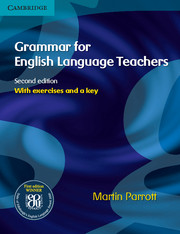Introduction to Part D
Published online by Cambridge University Press: 09 February 2023
Summary
Complex sentences generally cause particular problems for learners whose first language is not closely related to English, and these problems relate to comprehension as well as production. Teaching materials often neglect these problems.
Main and subordinate clauses
Complex sentences are those which contain one or more subordinate clauses.
A main clause is a group of words that can stand on its own. It usually contains at least a subject and a verb. This is sometimes called a ‘simple sentence’ or a ‘finite sentence’.
A subordinate clause is a particular kind of group of words that we attach in some way to a main clause. In the previous four sentences:
• these are main clauses:
A main clause is a group of word
It usually contains at least a subject and a verb
A subordinate clause is a particular kind of group of word
• these are subordinate clauses:
that can stand on its own
that we attach in some way to a main clause
Types of subordinate clause
Chapters 25–28 look at types of subordinate clause in isolation from each other. In reality, not only do clauses of different types frequently occur together, but it is often only because they are in combination that difficulties for learners arise.
Chapter 29 looks at the defining/non-defining distinction that can apply to a range of clause types.
Chapter 30 looks at examples where different types of clause are integrated. The Consolidation exercises for Chapter 30 thus also consolidate the content of Chapters 25–29.
We consider clause types under the following headings:
Finite and non-finite clauses
Finite clauses contain a verb which is in a recognisable tense form (see Chapters 10–17). Main clauses are normally finite. Some subordinate clauses are also finite.
Non-finite clauses are those in which the verb, if there is one, is in an -ing or infinitive form. Non-finite clauses are always subordinate (see Chapter 28).
- Type
- Chapter
- Information
- Grammar for English Language Teachers , pp. 384 - 385Publisher: Cambridge University PressPrint publication year: 2010



